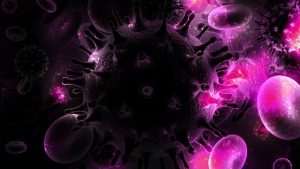When Proteins do damage instead of repair
Amyloidosis is one of those diseases that have a name that is hard to pronounce. It could be because it is a rare condition. This is actually a protein that develops and dumps itself where it is not wanted.
 Amyloidosis (am-uh-loi-DO-sis) is a rare disease that occurs when a substance called amyloid builds up in your organs. Amyloid is an abnormal protein that is usually produced in your bone marrow and can be deposited in any tissue or organ.
Amyloidosis (am-uh-loi-DO-sis) is a rare disease that occurs when a substance called amyloid builds up in your organs. Amyloid is an abnormal protein that is usually produced in your bone marrow and can be deposited in any tissue or organ.
Amyloidosis can affect different organs in different people, and there are different types of amyloid. Amyloidosis frequently affects the heart, kidneys, liver, spleen, nervous system and digestive tract. Severe amyloidosis can lead to life-threatening organ failure.
There’s no cure for amyloidosis. But treatments can help you manage your symptoms and limit the production of amyloid protein.
Sourced from: http://www.mayoclinic.org/diseases-conditions/amyloidosis/basics/definition/con-20024354
This condition is brought about by changes in proteins. The deposition of proteins on other organs and tissues is due to them being insoluble and they cannot be absorbed in the blood stream. You should also note that there are risk factors that can bring about this condition.
Amyloidosis is caused by changes in proteins that make them insoluble, leading them to deposit in organs and tissues. These amyloid proteins accumulate mainly in the tissue space between cells. Changes in proteins that make them amyloid proteins occur because of gene mutations.
What are risk factors for amyloidosis?
Risk factors for the inherited forms of amyloidosis are being genetically related to an ancestor with the disease. The risk factors for secondary amyloidosis are the underlying inflammatory chronic medical conditions.
Age is a risk factor for amyloidosis, as well, as most people who develop amyloidosis are over 60 years old.
Sourced from: http://www.medicinenet.com/amyloidosis/page2.htm
There are different types of Amyloidosis and each has its own mode of treatment. However even with different treatment modes certain principles are adhered to in all treatments. As research is being done newer drugs are being introduced for the treatment of this condition.
Principles of AL Amyloidosis Treatment
Treatment of all types of amyloidosis is currently based on the following principles:
Reducing the supply of amyloid forming precursor proteins.
Supporting the function of organs containing amyloid.
SAP scans in thousands of patients with various forms of amyloidosis have shown that when amyloid precursor protein supply is controlled:
Existing amyloid deposits often regress (become smaller).
New amyloid deposits stop appearing.
Organ function is often preserved and may also recover.
In AL amyloidosis, treatment is directed towards the abnormal plasma cells (usually in the bone marrow), which produce the abnormal light chains that form amyloid deposits. Treatment regimes are referred to as “chemotherapy”. The drugs used are similar to those used in the related condition of multiple myeloma. In recent years, newer types of drugs have been introduced, which appear to be more effective than previous regimes, with fewer side effects.
Sourced from: http://www.amyloidosis.org.uk/al-amyloidosis/treatment/